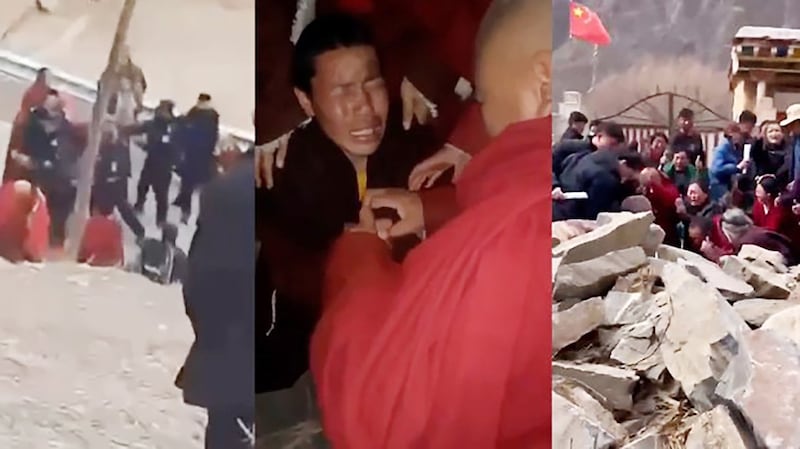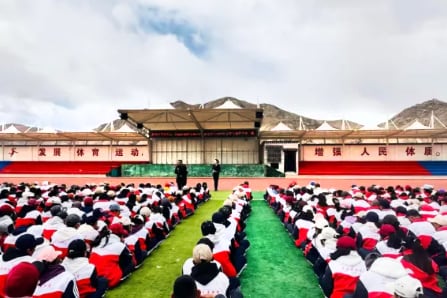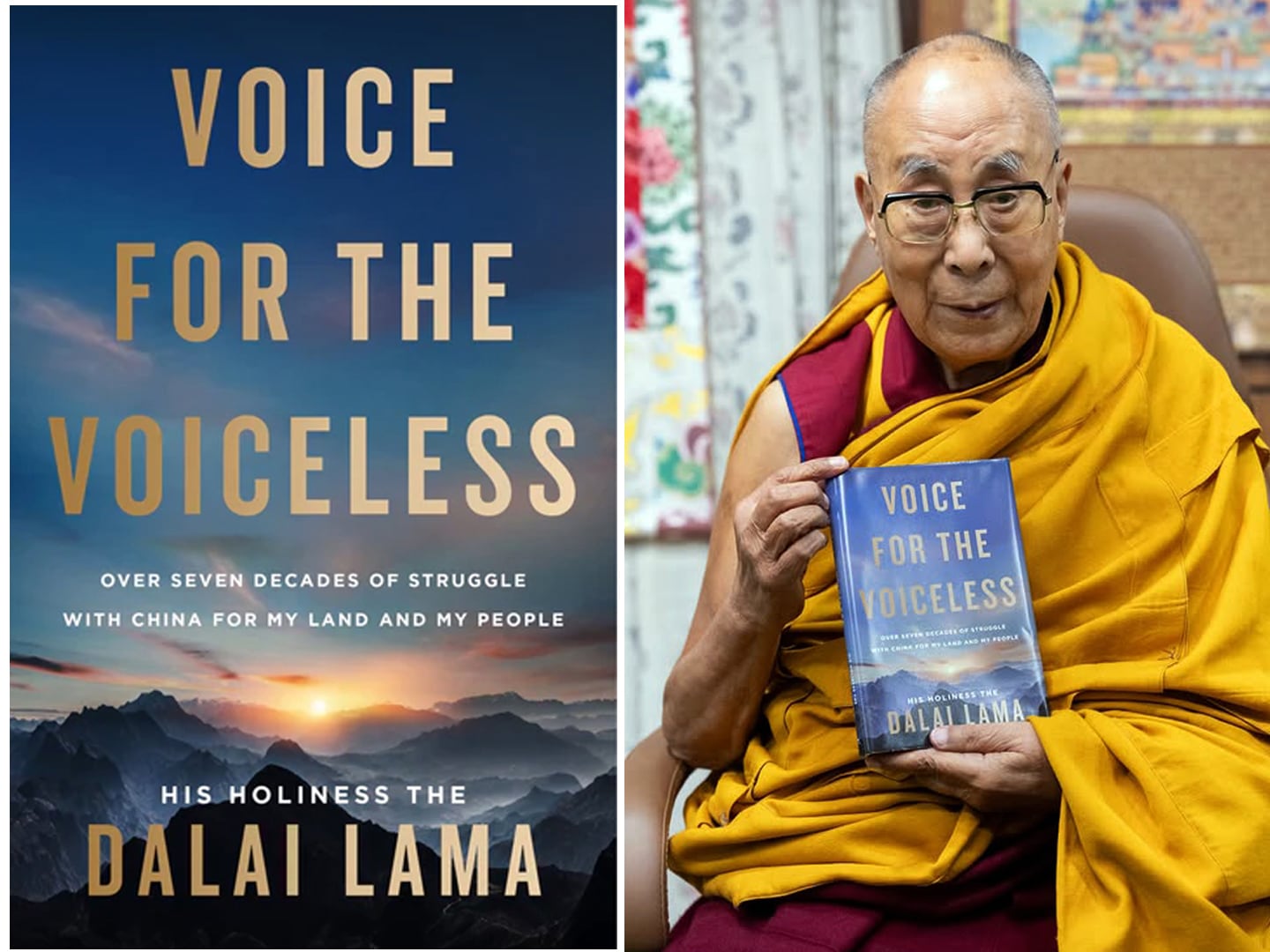OPINION: Tibetans' voices will be silenced if RFA, VOA are shut down
The services have been a lifeline to Tibetans stuck behind China’s ‘Great Firewall.’
BEIJING - The U.S. government’s announced plans to cut funding to international broadcasters Radio Free Asia and Voice of America have dealt a heavy blow to the hearts of countless Tibetans.
For decades, the Tibetan language services of RFA and VOA have been lifelines for Tibetans behind China’s “Great Firewall” of censorship, connecting them to outside world.
These two services have provided windows into the truth about Tibet for Tibetans in Tibet and in exile, while also offering critical resources to the international community.
Over the years, their reporting has served as an indispensable source for the United Nations Human Rights Council, environmental organizations, human rights groups and Tibet experts around the world.
Now, with the potential shutdown of these services, Tibet risks further marginalization in global conversations and the international community’s attention to the Tibetan people’s plight is likely to decline further.
Suffocating restrictions
Access to information in Tibetan regions has long been highly restricted.
In 2000, the Chinese government launched the “Western Development Broadcasting Project” to saturate the region with official propaganda. It also constructed numerous high-powered jamming stations across the plateau to block international Tibetan-language broadcasts, including those from RFA and VOA — stations that are still in use today.
By the 2020s, nationwide surveillance projects like “Skynet" and “Sharp Eyes” had deployed vast networks of cameras, facial recognition systems and AI-powered monitoring technologies to reinforce control over society — with Tibetan regions under particular scrutiny.
By 2023, China had installed more than 500 million surveillance cameras nationwide. That same year, a Tibetan school in Lithang, Kham, was shut down after a teacher contacted relatives abroad via WeChat and used RFA Tibetan programming as classroom material.
Even under this suffocating control, many Tibetans still risked everything to access forbidden broadcasts.
Some climbed mountaintops in search of a clearer signal. Others listened alone, late at night, in monastery corners. Some were summoned, detained, or even sentenced — simply for trying to hear the truth about Tibet, or to receive rare updates from His Holiness the Dalai Lama.
And still, countless brave individuals find ways to get vital information out.
In February 2024, China’s plan to build a hydropower dam in Dege, Kham, threatened to submerge six monasteries and surrounding villages. Local Tibetans protested and were met with arrests and beatings.
It was RFA’s Tibetan service that first broke the news. The story drew international attention, and so far the project hasn’t proceeded.
Meanwhile, the Chinese government is rapidly expanding its global media influence.
China Global Television Network, or CGTN, has established bureaus across North America, Europe and Africa to produce multilingual content and “tell China’s story well.”
The China Daily collaborates with U.S. media outlets to publish full-page sponsored inserts. CGTN and Xinhua now release YouTube videos to counter international criticism of China’s record in Tibet and Xinjiang.
In September 2024, China also launched a new “Tibet International Communication Center.” Its mission? To serve as “a global communication window for Tibet… in line with national strategic goals… building a more effective international media system related to Tibet,” and to “guide public opinion and conduct international public opinion struggles” on Tibet-related issues.
This aggressive global information offensive — while Tibet remains sealed off domestically — shows a stark contrast between external expansion and internal suppression.
Chinese media celebrates
Yet at this critical moment, the United States has chosen to gut RFA and VOA, including their Tibetan-language services. This decision is deeply regrettable and will undermine the Tibetan cause.
Hu Xijin, former editor-in-chief of China’s state-run Global Times, celebrated the news: “Voice of America is paralyzed! And the equally poisonous RFA is gone too. This is a great day… I hope this development is irreversible.”
Hu’s reaction underscores how crucial these Tibetan voices are. While the United States claims to defend global information freedom, it has now ceded key ground in the contest of soft power and public diplomacy.
The Tibetan services of RFA and VOA were among the most important elements of the United States’ global broadcasting system. Shutting them down has not only deprived Tibetans of a vital information source — it has weakened the U.S. presence on the global stage.
Since 2006, I have written more than 900 articles for RFA’s Tibetan service. With the help of RFA’s senior broadcaster and translator Dolkar, whose accurate translations and eloquent Tibetan narration brought my words to life, my writing reached the ears and hearts of Tibetan listeners. Weekly broadcasts sustained not only my writing but also my reflections on Tibet’s fate.
This commitment culminated in four books: “Hearing Tibet,” “These Years in Tibet” (co-authored with Wang Lixiong), “Behind the Blessed Land,” and “Tibet in the Year of the Pandemic.” These works trace Tibet’s past, present, and future — and they serve as a heartfelt response to the silence surrounding the people, their monasteries, their towns, and their history.
Now, with fears of a potential closure of RFA’s Tibetan service, I feel a deep sorrow. I still believe that its voice will not vanish, and its influence will not disappear. It was once a bridge between Tibetans inside and outside the country, and it will continue to live on in memory.
Tibetans need more access to the outside world. More truth. More diversity. More clarity.
The Tibetan services of RFA and VOA were not just media — they were a cultural flame, a guardian of language, a lighthouse of thought.
Even under the weight of surveillance, Tibetans inside Tibet still listen: To remember their past, to understand their present, and to imagine a future that’s their own.
Shutting down these services is to sever the Tibetan people from their resonance, their reflection, and their hope.
We must ask:
When Tibetan children grow up hearing only a single narrative,
When villagers and nomads can no longer receive truthful messages from afar,
When monks are trapped in a web of data and ever-watching cameras—
Who will tell them that their world is not only the one written by the Chinese government?
Therefore, I appeal:
Please do not silence Tibet.
Please protect the last information channels for the Tibetan people.
Let truth continue to reach the plateau.
Let hope continue to cross borders.
Tibetan voices must not be buried. Let all people of conscience stand together and keep the light of truth shining across the snowland.
Tibetans have already lost too much — please, do not take away our last remaining voice.
Tsering Woeser is a Tibetan writer and poet based in Beijing. The views expressed here are her own.



